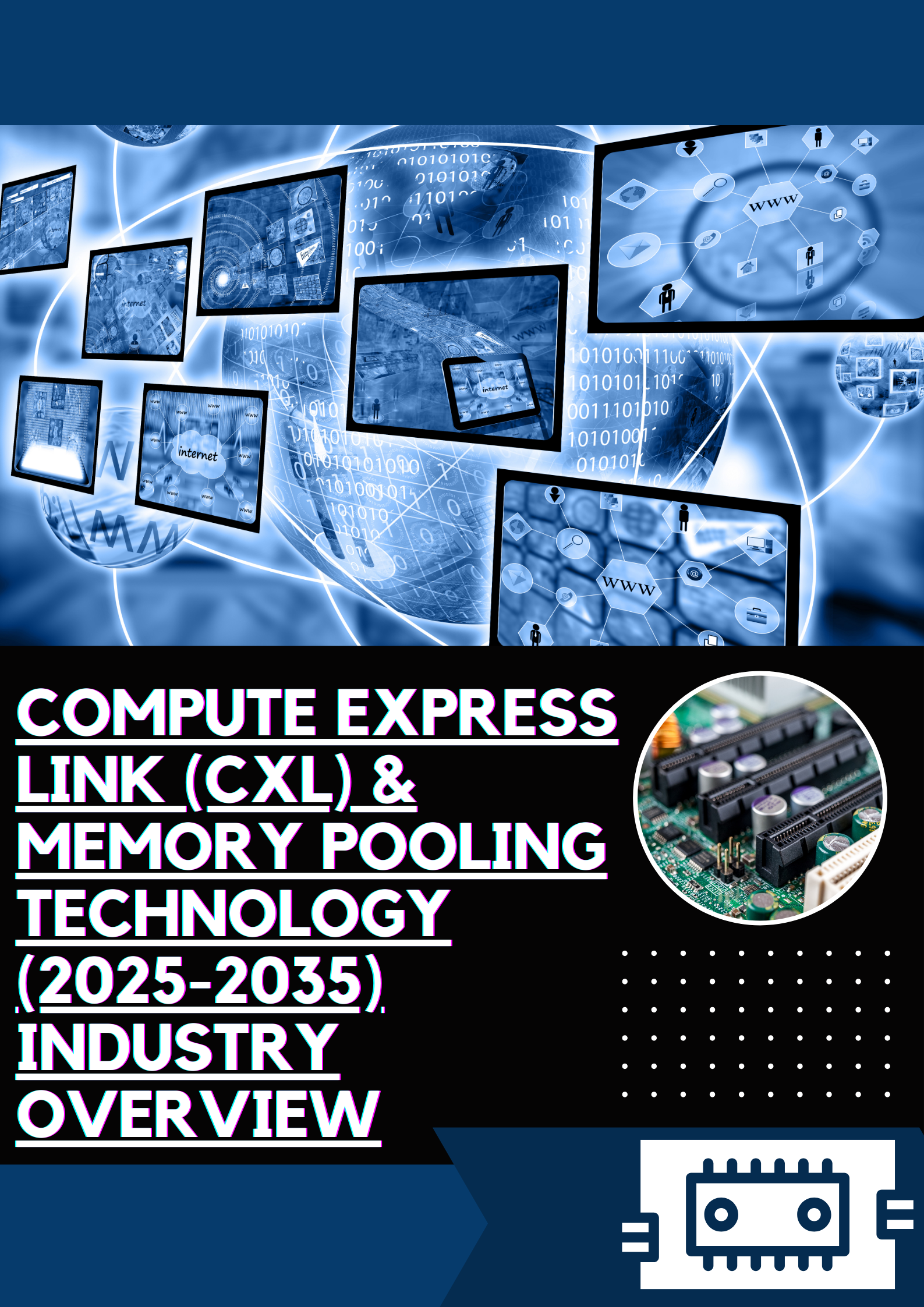1. Executive Summary
-
- Overview of Compute Express Link (CXL) and Memory Pooling Technology
- Key Insights on the Growth and Adoption of CXL in Data Centers
- Future Outlook and Market Opportunities for Memory Pooling (2025-2035)
2. Introduction
-
- Definition and Background of Compute Express Link (CXL)
- The Role of Memory Pooling in Modern Computing Architectures
- Importance of CXL for Data Center Performance and Scalability
3. Technical Overview of CXL Technology
-
- CXL Architecture: How It Works
- Types of CXL: CXL.io, CXL.cache, and CXL.memory
- CXL 3.0: New Features and Enhancements for Memory Pooling
- Advantages of CXL Over Existing Memory Interconnect Technologies
4. Memory Pooling Technology
-
- Definition and Concept of Memory Pooling
- Benefits of Memory Pooling for Cloud and Hyperscale Environments
- How CXL Facilitates Efficient Memory Pooling in Data Centers
- Use Cases and Applications for Memory Pooling with CXL
5. Market Drivers for CXL and Memory Pooling
-
- Increased Demand for AI and Machine Learning Workloads
- Growth of Data-Intensive Applications and Big Data Analytics
- Rising Need for Cost-Efficient Memory Management in Data Centers
- The Role of Virtualization and Edge Computing in Driving CXL Adoption
6. Industry Adoption of CXL
-
- Key Players in the CXL Ecosystem (Intel, AMD, NVIDIA, etc.)
- Early Adoption Trends in Data Centers and Enterprise IT
- Adoption Barriers and Challenges for CXL and Memory Pooling Technology
- Industry Roadmap for CXL and Memory Pooling Adoption (2025-2035)
7. Competitive Landscape
-
- Comparison of CXL with Other Memory Interconnect Technologies (e.g., PCIe, NVMe, Gen-Z)
- Key Differentiators of CXL in the Market
- Major Companies Developing CXL-Compatible Solutions
- Strategic Alliances and Partnerships in the CXL Ecosystem
8. Use Cases of CXL and Memory Pooling
-
- Hyperscale Data Centers: Optimizing Memory Resources with CXL
- AI/ML Workloads: Memory Pooling to Support High-Demand Compute Tasks
- High-Performance Computing (HPC): Enhancing Scalability and Flexibility
- Edge Computing: Leveraging CXL for Distributed Memory Access
9. CXL 3.0 and Future Trends (2025-2035)
-
- The Evolution of CXL: From CXL 1.1 to CXL 3.0
- Future Use Cases and Emerging Technologies that Will Drive CXL Adoption
- Memory Pooling for Disaggregated Architectures and Cloud Environments
- Predictions for the Impact of CXL on the Semiconductor and Data Center Industries
10. Key Considerations for Implementing CXL in Data Centers
-
- Infrastructure Requirements for Supporting CXL and Memory Pooling
- Scalability and Integration Challenges
- Power and Thermal Considerations for CXL-Powered Systems
- Best Practices for Transitioning to CXL-Compatible Infrastructure
11. Case Studies and Success Stories
-
- Real-World Implementations of CXL and Memory Pooling in Data Centers
- Success Stories from Early Adopters of CXL Technology
- Case Study on How Memory Pooling Is Redefining Resource Utilization in Data Centers
12. Market Outlook and Opportunities (2025-2035)
-
- Growth Projections for CXL and Memory Pooling in Global Markets
- Revenue Potential for Companies Developing CXL-Compatible Solutions
- Key Opportunities in AI, HPC, and Edge Computing for CXL Adoption
13. Conclusion
-
- Summary of Key Findings and Insights on CXL and Memory Pooling Technology
- Long-Term Impact of CXL on Data Center and IT Infrastructures
- Strategic Recommendations for Organizations Considering CXL Adoption
14. Appendices
-
- Glossary of Terms Related to CXL and Memory Pooling
- Technical Specifications of CXL 2.0 and 3.0
- Additional Resources and Research on CXL and Memory Pooling Technology
#CXL #MemoryPooling #CXLTechnology #CXL3 #DataCenters #AIWorkloads #HyperscaleDataCenters #BigData #HPC #EdgeComputing #MachineLearning #CloudInfrastructure #Virtualization #DataCenterScalability #MemoryManagement #SemiconductorTrends #CXLAdoption #ITInfrastructure #TechInnovations #AIInfrastructure #ComputeLink #DataCenterPerformance






